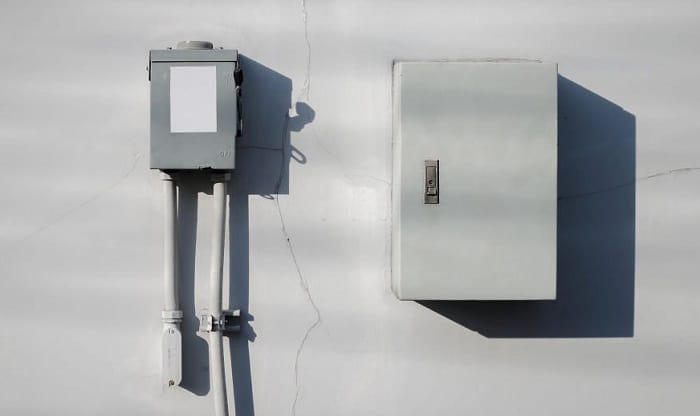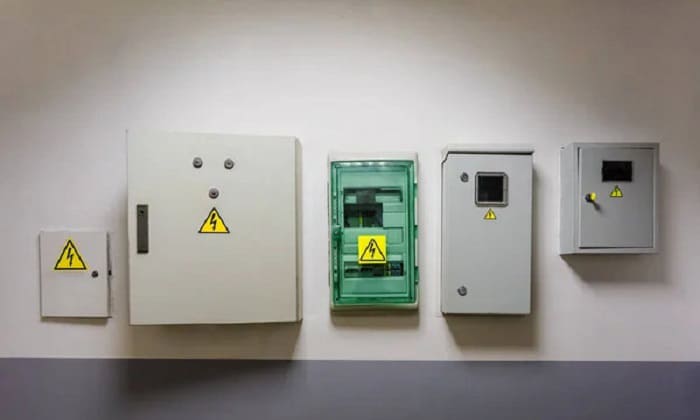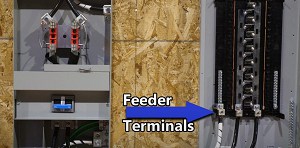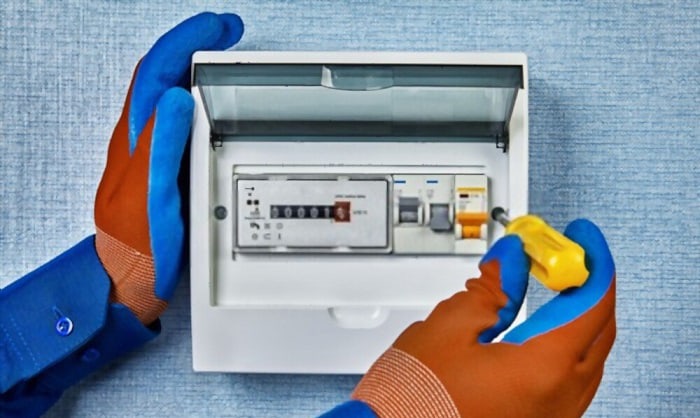Has your primary load center run out of space? Perhaps, you want to install a 100A sub panel for your new circuits as a result. In this case, you’re probably wondering how to wire a 100 amp sub panel from a 200 amp main panel.
Connecting the two requires a feeder breaker and its wires, as well as appropriate grounding. Ensure that you’re using the right parts, and the connection is tight to prevent issues. Read below for more details.
Table of Contents
Ways to Wire a 100 Amp Sub Panel From a 200 Amp Main Panel
The installation of a 100-amp sub panel follows similar steps to the standard main panel setup. Just like the primary load center, the secondary breaker box should be in a dry, accessible location.
What To Prepare
- Subpanel installation kit
- Feeder wire
- Electric tape
- Grounding conductor
- 100-amp breaker
- PVC conduit
- PVC cement
- Plywood
- Circular saw
- Hand drill
- Multimeter
- Flashlight
- Hammer
- Flathead screwdriver
- Neutral lug kit
- Safety gear (gloves, glasses, insulated shoes)
Step #1: Mount The Panel
First, ensure that your mounting location and position follows the standards imposed by your local electrical code. Next, cut a 4×4-foot plywood sheet, which will become the panel’s anchor.
Place and secure the plywood sheet to the back of the sub panel’s enclosure. Then, place the panel to your preferred location on the wall or on a durable structure.
Remember, adding a 100 amp subpanel means ensuring that it has adequate clearance from the main panel and other objects in the area. Ensure that the sub panel has at least 3 feet of space from other items to promote accessibility and safety.
Step #2: Turn Off The Main Breaker
Deactivate the power from the main service panel any time that you’re working with breaker boxes. That way, you can prevent risks of accidents and injuries, particularly from electrocutions.
This step often only demands you turning off the main breaker from the main service panel. Don’t forget to verify that the circuit is off with a multimeter.
Step #3: Prepare The Connection
Remove the knockout covers from the side of the main panel by pounding them with a hammer and a flathead screwdriver. Do the same for the knockout covers on the sub panel. Another option is to jam a pair of pliers into the covers to remove them.
Next, install two small PVC fittings into the knockout covers of both the main and sub panels. Cut the next PVC section and glue them to the previous ones with cement. Remember to scrape the edges of the pipes beforehand to smoothen them.
The PVC will become the conduit that’ll hold some of the 100 amp sub panel wiring.
The next part of the 100 amp sub panel installation is to attach the ground bars. Once finished, place a sticker indicating the specifics of the ground bars for future reference.
Step #4: Establish The Connection
To run a 100 amp sub panel off a 200 amp main panel, feed the ground wire through the PVC conduit and secure it to the main panel’s ground bar. Secure the other end of the ground wire to the sub panel’s ground bar.
Next, wiring a subpanel with 3 wires typically needs you to feed the feeder wire through the PVC conduit. Connect the two feeder wires to the 100-amp breaker. Then, install that circuit breaker to the main panel.
The next step is to connect and secure the other ends of the feeder wires to the sub panel, particularly its neutral bus bar. Make sure to use the neutral lug kit to secure this attachment.
With the connections secure, install the circuit breakers you need for the sub panel. Turn on the main circuit breaker and activate the 100-amp panel to test the wiring.
Helpful Tips/FAQs
Can I Run Two 100 Amp Sub Panel Off 200 Amp Main?
You can typically run two or more 100-amp sub panels from a 200-amp main service panel. But the wiring diagram shouldn’t exceed the circuitry’s 200-amp limit.
For example, you might only connect two 100 amp or one 200 amp sub panel from 200 amp main. However, it’s important that you don’t use more than 160 amps at once.
What Size Wire Is Needed For A 100 Amp Sub Panel?
Installing a 100 amp sub panel generally requires the use of one of the following options. The choices are:
- #4 AWG copper wire
- #2 AWG aluminum wire
For more details on this topic, click here!
What Type Of Wire Goes From The Main Panel To A Subpanel?
To feed a subpanel from a main panel often requires three types of wires to complete the connection. They are the neutral wire, ground wire, and the two feeder or hot wires.
How Do You Install An Outdoor Subpanel?
Outdoor subpanel installation has similar steps to setting up an indoor breaker box. But there are key differences between the two procedures, such as:
- The location of the outdoor subpanel. Your choices include a durable pole or a detached structure.
- You may need a grounding rod as well.
Can I Run A Sub Panel Off 100-Amp Main?
It’s possible to connect a sub panel from 100 amp main breaker box. The connection should be stable and won’t promote safety risks if the setup has proper wirings and the overall electrical load doesn’t exceed the 100-amp limit.
Are Eaton Sub Panels Good?
Eaton sub panels are often good choices to house breakers and complete circuits in properties. One excellent candidate is the BR2020B100V Eaton 100 amp sub panel, which many users found to be sturdy, easy to install, and promotes great value.
Related:
Conclusion
At this point, you should now know how to wire a 100 amp sub panel from a 200 amp main panel. Remember, ensure that the calculations for the circuitry are correct before starting this procedure.
For instance, don’t attempt to use more amperage for your sub panel than what the main breaker box can hold. Also, your equipment, materials, and tools need to be in good working condition. Otherwise, you might run into some issues with the circuitry.

I am Edwin Jones, in charge of designing content for Galvinpower. I aspire to use my experiences in marketing to create reliable and necessary information to help our readers. It has been fun to work with Andrew and apply his incredible knowledge to our content.




